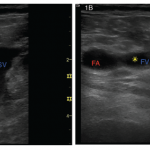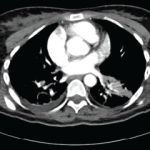Among the patients who received a lower leg cast, there were six instances of deep-vein thrombosis and three cases of pulmonary embolism when heparin was given. One patient had both. In the control group, eight had deep-vein thrombosis, four had pulmonary embolism and one had both.
Once again, the per-protocol analysis showed that heparin offered little benefit.
There was just one case of clinically relevant non-major bleeding, and that was in the treatment group. The rates of minor bleeding were 7.6% with heparin and 6.8% without.
Because of the limitations of previous tests on heparin, the researchers write, “the need for stronger evidence regarding thromboprophylaxis for each of these indications has been expressed in several reviews and guidelines.”
The arthroscopic trial was known as POT-KAST. The leg cast study was named POT-CAST.
Reference
- van Adrichem RA, Nemeth B, Algra A, et al. Thromboprophylaxis after knee arthroscopy and lower-leg casting. N Engl J Med. 2016 Dec 3. Doi: 10.1056/NEJMoa1613303

